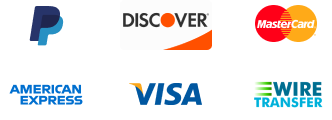The global food pathogen detection technology market size was valued at USD 4.62 billion in 2024 and is estimated to reach USD 10.39 billion by 2033, growing at a CAGR of 9.43% during the forecast period (2025–2033). High-profile outbreaks, such as those caused by Salmonella, E. coli, and Listeria, have heightened the need for rapid, accurate testing methods to prevent contamination. This drive for safety, combined with stringent food safety regulations and the need for compliance with health standards, has accelerated the adoption of advanced technologies, including PCR, biosensors, and rapid testing kits in the food industry.
Food pathogen detection technology refers to the methods and systems used to identify harmful microorganisms, such as bacteria, viruses, and parasites, that can contaminate food and pose health risks. These technologies are crucial in ensuring food safety across various stages of production, from raw materials to finished products. Detection methods include traditional microbiological techniques, rapid immunoassays, PCR (Polymerase Chain Reaction) testing, and advanced biosensors. These technologies help detect pathogens like Salmonella, E. coli, and Listeria, enabling food manufacturers, processors, and regulatory authorities to monitor food quality, prevent outbreaks, and ensure public health.
Innovations in detection technologies, such as rapid testing kits and molecular diagnostics
Innovations in detection technologies, particularly rapid testing kits and molecular diagnostics, are significant drivers in the global food pathogen detection technology market. These advancements enable faster, more accurate detection of pathogens, which is crucial in preventing foodborne illnesses.
Such technologies not only improve efficiency in food safety processes but also ensure compliance with stringent regulations, helping manufacturers maintain high standards and consumer trust in an increasingly health-conscious market.
Complex regulatory compliances
Different regions have varying regulations and standards for food safety, making it challenging for manufacturers to adopt a one-size-fits-all solution. For example, in North America, the U.S. Food Safety Modernization Act (FSMA) requires specific pathogen testing methods, while in Europe, the European Food Safety Authority (EFSA) has its own set of guidelines. This creates a complex regulatory environment for companies, especially those operating globally. Adapting detection technologies to meet diverse regulatory requirements increases the cost and time needed for product development and approval. As a result, smaller companies may face difficulties in navigating these complexities, limiting market growth.
Integrating IoT devices and automation in food safety processes
Integrating IoT devices and automation in food safety processes presents a significant opportunity in the global food pathogen detection technology market. IoT-enabled devices can provide real-time monitoring and instant pathogen detection, improving food safety and reducing human error.
This integration streamlines food safety processes, making them more efficient and scalable. As IoT technologies continue to advance, their ability to automate pathogen detection and enhance monitoring across the food supply chain will be a key growth driver for the market.
| ATTRIBUTES | DETAILS |
|---|---|
| Study Period | 2021-2033 |
| Historical Year | 2021-2024 |
| Forecast Period | 2025-2033 |
| By Technology |
|
| By Applications |
|
| By End-User |
|
| Regional Insights |
|
Polymerase Chain Reaction (PCR) is the dominant technology in the food pathogen detection market due to its high accuracy and sensitivity in identifying pathogens at low concentrations. PCR is widely used in the detection of bacteria, viruses, and other microorganisms in food samples. It amplifies specific DNA sequences, allowing for precise identification of pathogens like Salmonella and E. coli. Its ability to provide reliable results in a relatively short time makes it the preferred choice for food safety testing in both large-scale production and research settings, ensuring compliance with food safety regulations.
The meat and poultry sector is the dominant application, given its susceptibility to contamination from harmful pathogens such as Salmonella, Campylobacter, and Listeria. These pathogens pose serious health risks to consumers, making accurate detection critical. The increasing demand for safe and high-quality meat products is driving the adoption of advanced pathogen detection technologies. Stringent food safety regulations, particularly in regions like North America and Europe, further fuel the growth in this sector, prompting manufacturers to implement effective pathogen detection solutions to prevent outbreaks and ensure consumer protection.
Food manufacturers are the dominant end-users of pathogen detection technology, as they must ensure that their products meet regulatory standards for safety and quality. The increasing prevalence of foodborne illness outbreaks has heightened the need for stringent pathogen testing during production. Food manufacturers rely on technologies like PCR, immunoassays, and biosensors to detect harmful microorganisms early in the production process, minimizing the risk of contamination. This proactive approach helps reduce costs associated with recalls, legal liabilities, and reputational damage while ensuring that only safe products reach consumers in a highly competitive market.
North America is the dominant region in the global food pathogen detection technology market, driven by stringent food safety regulations and high consumer awareness about foodborne illnesses. The region's robust regulatory framework, led by the U.S. Food and Drug Administration (FDA) and the Canadian Food Inspection Agency (CFIA), mandates rigorous food safety standards. These regulations propel the demand for advanced pathogen detection technologies to ensure compliance and prevent outbreaks.
In the U.S., the Food Safety Modernization Act (FSMA) emphasizes proactive measures, increasing the adoption of rapid testing technologies like polymerase chain reaction (PCR) and immunoassays in food processing industries. For example, companies such as 3M and Bio-Rad Laboratories have developed innovative detection kits that offer faster and more accurate results, catering to the region's need for efficient testing.
Additionally, the growing trend of organic and minimally processed foods, which are more susceptible to contamination, has further fueled the market. The increasing frequency of food recalls and high-profile cases, like the 2021 Salmonella outbreak linked to onions, highlight the critical need for reliable pathogen detection solutions in North America, cementing its dominance in this market.

Request Table of Contents (TOC), Please Fill below form



